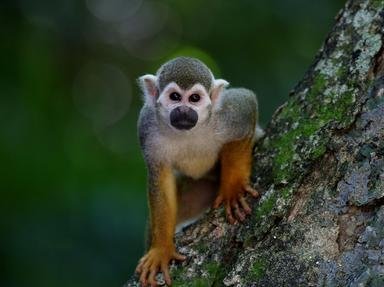
Which Ones Are Primates? (Part 1) Quiz
Primates are characterized generally by having five-fingered grasping hands with fingernails, forward-facing eyes, relatively large brains compared to most animals, social behavior and longer than average lifespans amongst animals. Here are some of them
A collection quiz
by Billkozy.
Estimated time: 3 mins.
- Home
- »
- Quizzes
- »
- Animal Trivia
- »
- Wild Mammals
- »
- Primates